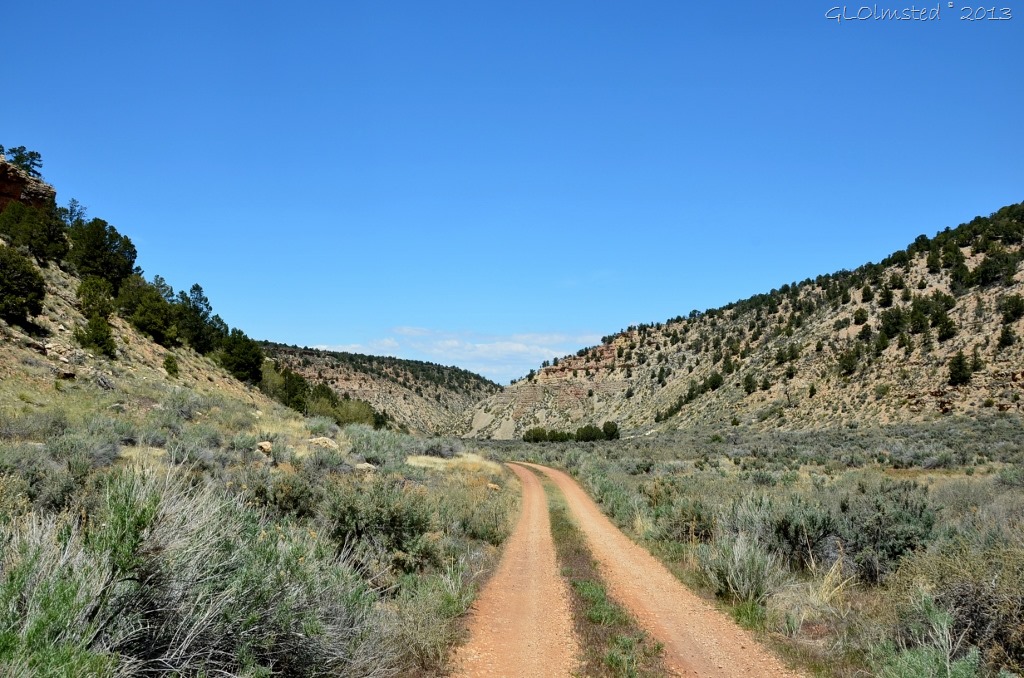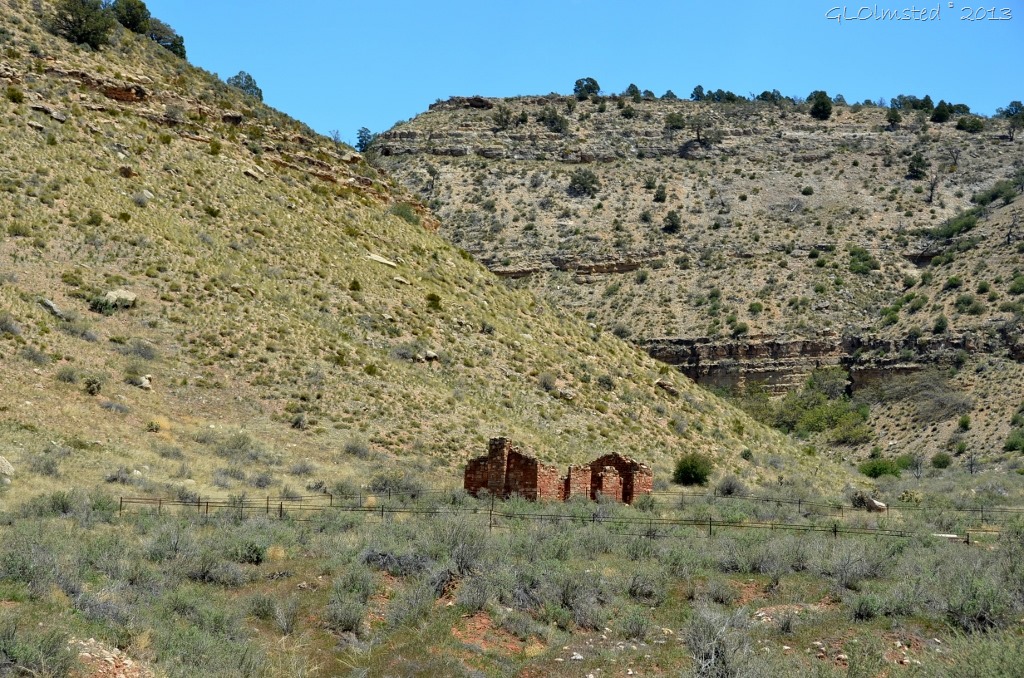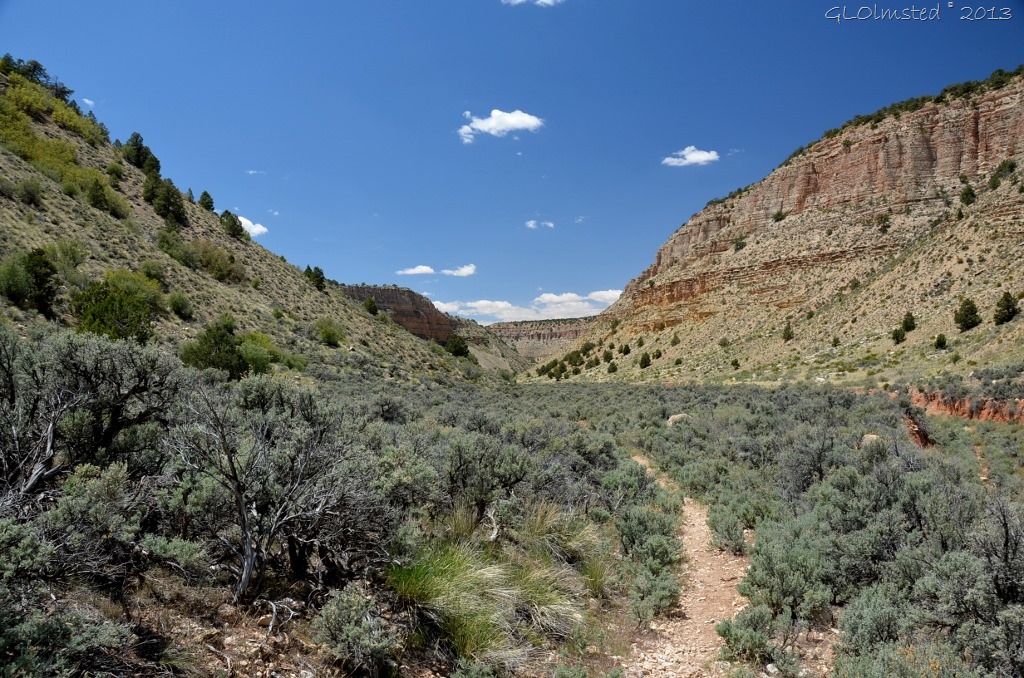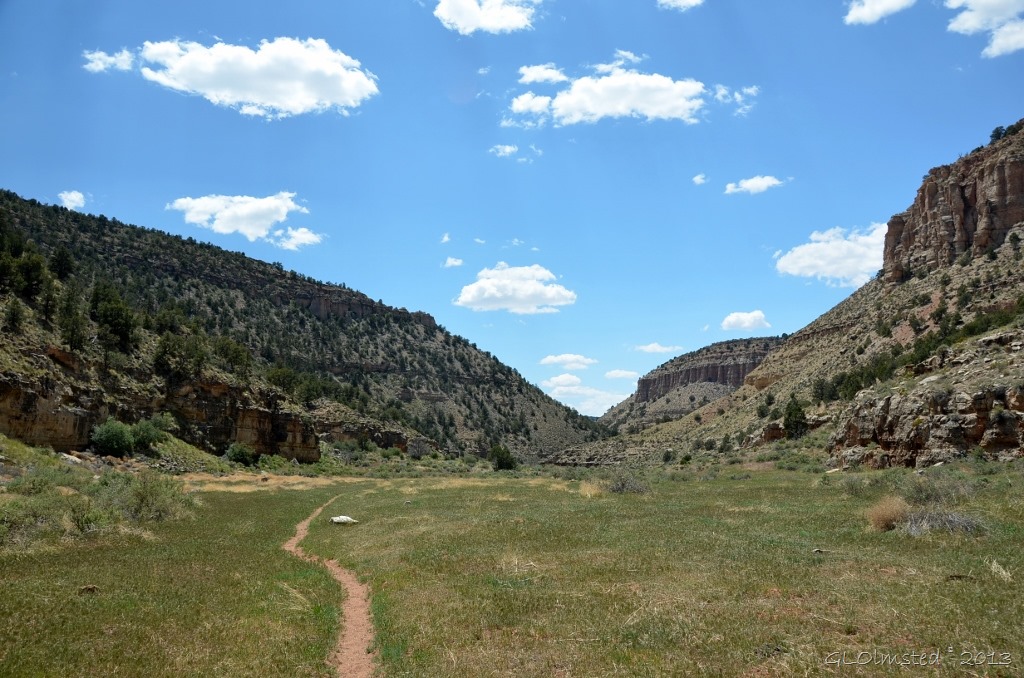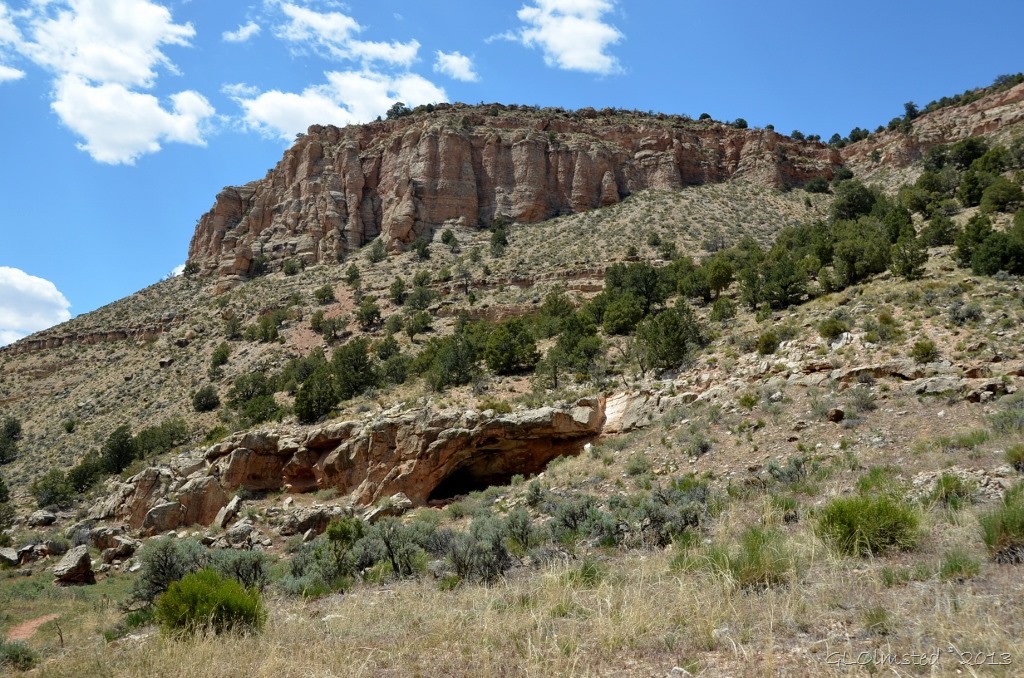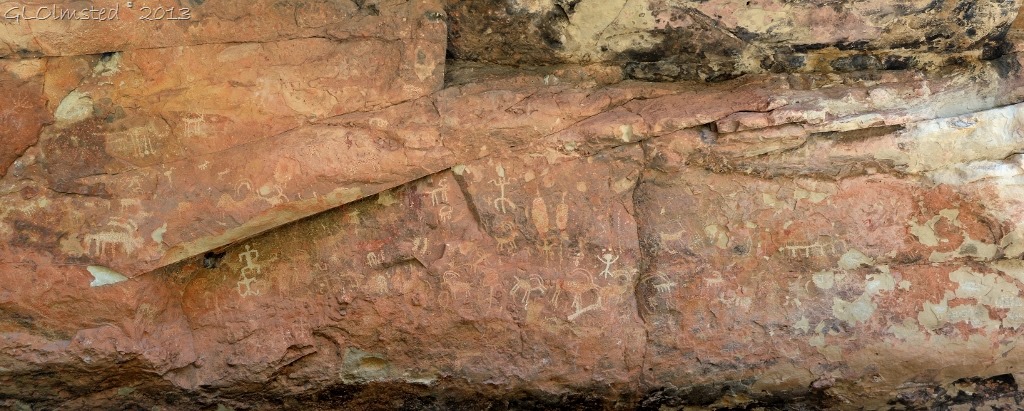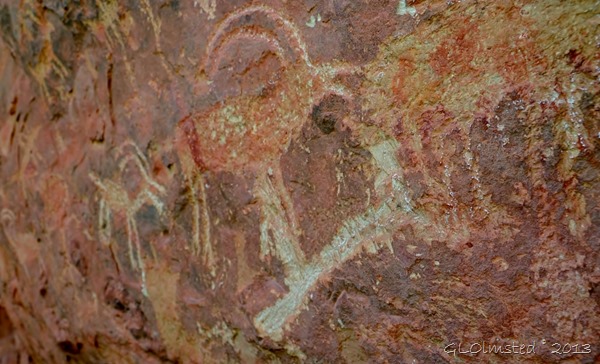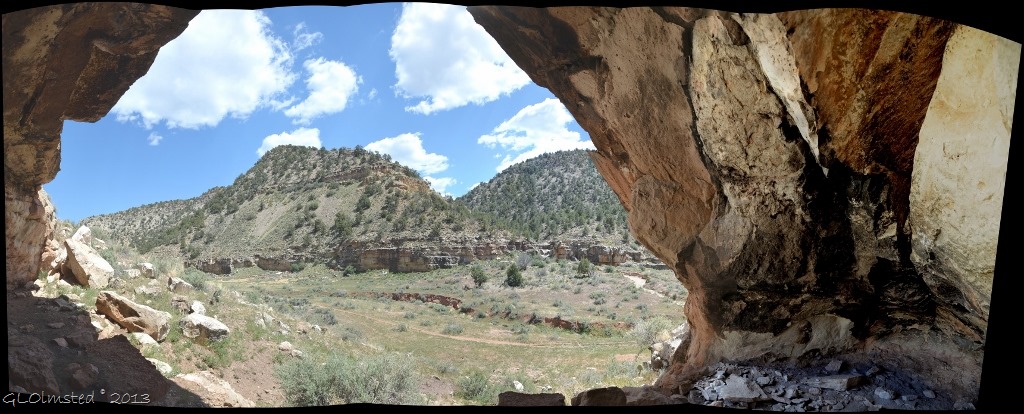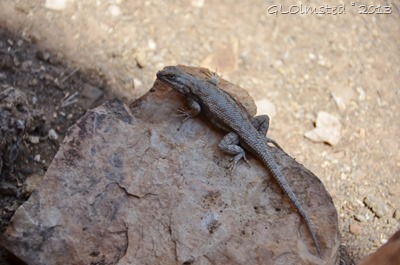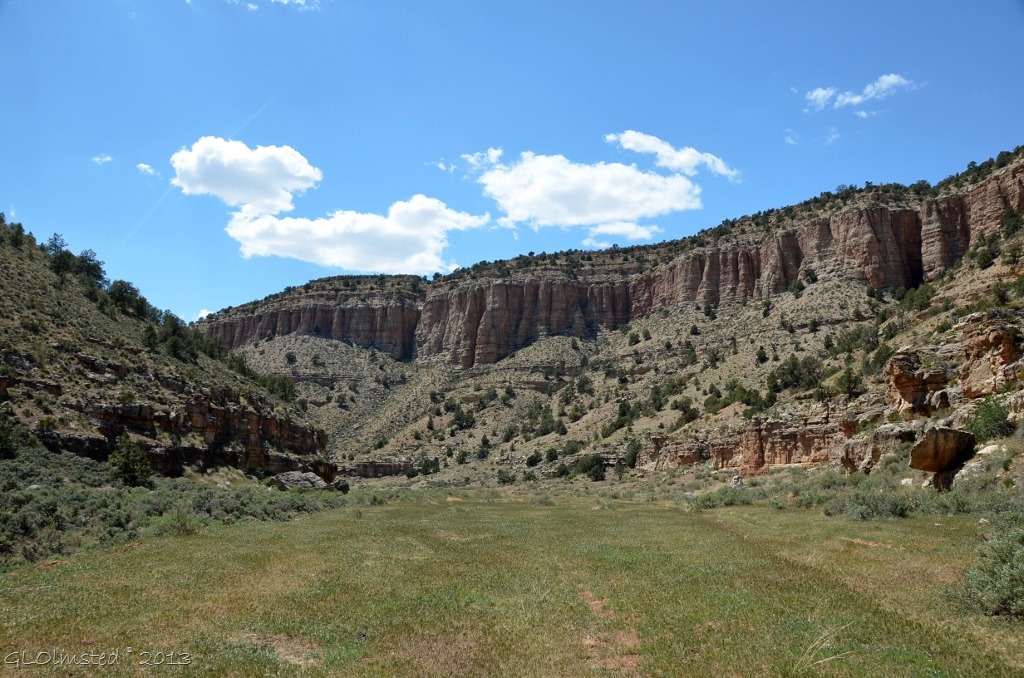I went to Snake Gulch to see Native American rock art, not snakes. I’d heard this is where to find some of the best preserved prehistoric rock art along the Kaibab Plateau. And although I only hiked in about 2 1/2 miles out of the 22 mile possibility I saw some very impressive pictographs and petroglyphs.
Always a beautiful drive through the Kaibab National Forest and FR642 ended on the edge of Kanab Creek Wilderness. At one time prior to the canyons wilderness designation in 1984 there was a road that accessed Snake Gulch, but now only hikers and equestrians frequent this spiritual experience. Hiking was very easy with the lack of any significant elevation gain or loss.
Just before entering the wilderness area I saw this ruin that surely wasn’t native made but instead was evidence of ranchers once using the gulch to run cattle.
I walked the narrow trail keeping my eyes peeled for snakes, scanning back and forth, ears attentive for a insistent rattle. At first the regularity of grasshoppers jumping from just ahead gave me a start. Not a lot of other sounds, an occasional bird, but mostly just the whispery wind. And good thing for a breeze as the sun beat down with no shade in sight.
I would stop to scan the irregular canyon walls with their horizontal layers deposited 270 million years ago by an ancient sea. The power of water carved this canyon later on and left rich soil where the native people planted crops.
They found shelter in shallow caves, a place to call home and raise a family.
Several of the Snake Gulch rock art panels are listed on the National Register of Historic Places because of the artistic and distinctive painted and pecked designs that date back as far as 500 BC. Paint was made from plants or minerals ground into powder and mixed with animal fat or plant oil.
They have survived in this timeless environment. Some are fading from weathering while others have broken off the rock face. Unfortunately some vandalism has also occurred and could be unintentional by touching and leaving oils behind which causes the paint to deteriorate. Respect must be observed in this ancient place. Whether we understand the meanings behind the art doesn’t really matter because the images reflect changes over time for people of the past.
I continued beyond the shelter a short distance, but it called me back. I wanted to sit on the well polished rocks that had fallen long before the native people used this place. Black smoke stains from their fires long ago still clung to the rock. I felt at peace.
And other than the spirits, only a lizard joined me for company.
How to get there
From Jacobs Lake Hwy 67, drive west on FR461 for 5 miles then continue west on FR462 for 3 miles to FH22. Turn left and go 1.5 miles to FR423. Turn right and go 1.25 miles to FR642. Follow FR642 for 2 miles to the end at the trailhead. The gravel road is passable in a sedan, but the last 3 miles could be a bit difficult when wet.
Snake Gulch trail #59 is 44 miles round trip. Camp nearby and get an early start. Best to hike in spring or fall as there is absolutely no shade and will get quite hot during summer.
Please visit with respect.

